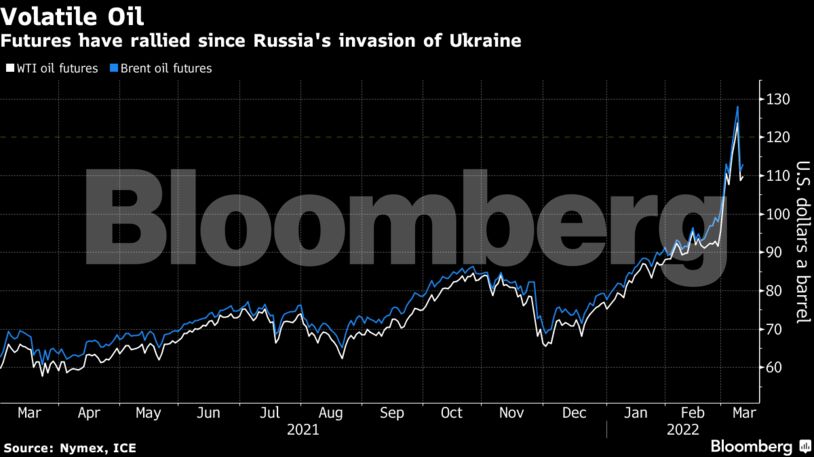Futures in London topped $117, while those in New York rose near $114 a barrel. Markets have been panicky since war broke out, seeing sharp intraday swings on headlines from Ukraine and OPEC+ members. On Thursday, the foreign ministers of Russia and Ukraine will talk in Turkey as both sides repeat their demands in order to call a halt to the fighting.
That follows the first signs of disunity in OPEC+ after the United Arab Emirates called on the group Wednesday to boost output faster than planned. The nation’s energy minister appeared to temper that message a few hours later. OPEC+, which counts Russia as a key member, has resisted calls from consumers to pump more, arguing that the surge in prices is driven by geopolitical tensions rather than a supply shortage.
“OPEC+ will have to jump through many hoops to agree to deviate from its current road map,” said Vandana Hari, the founder of Singapore-based Vanda Insights, describing the market as “panic-stricken.”

Oil rallied earlier this week to the highest since 2008, in part due to fears that the loss of Russian flows may stretch an already tight market. Prices also surged as the U.S. moved to ban imports, which if followed by other Western nations, could see crude hit $240 a barrel this summer, according to Rystad Energy. Still, the heads of OPEC and Chevron Corp. said there’s no shortage of oil, while Iraq insisted there’s no need to ramp up output more than planned.
The invasion is reverberating through refined products markets as well, with diesel in Europe and the U.S. seeing unprecedented swings this week. Retail gasoline prices on both sides of the Atlantic have jumped to records in recent days.
| Prices |
|---|
|
In a further sign of the strain on global diesel markets, Saudi Arabia was seeking to purchase an unusually large amount of diesel, in a surprise move for a country that is usually a net exporter. Stockpiles of the distillate fuels in the U.S. also fell sharply last week.
Share This:




 CDN NEWS |
CDN NEWS |  US NEWS
US NEWS 































